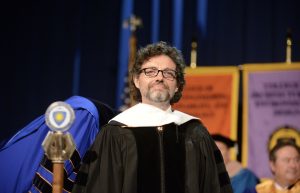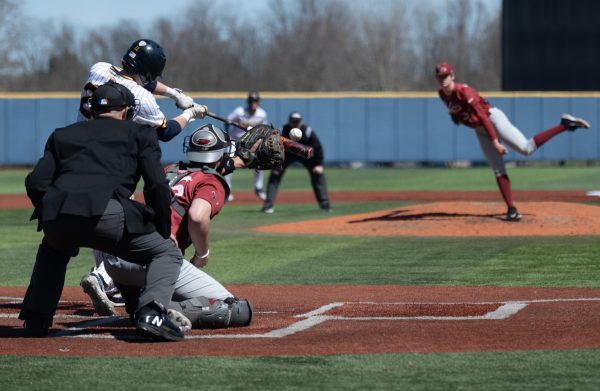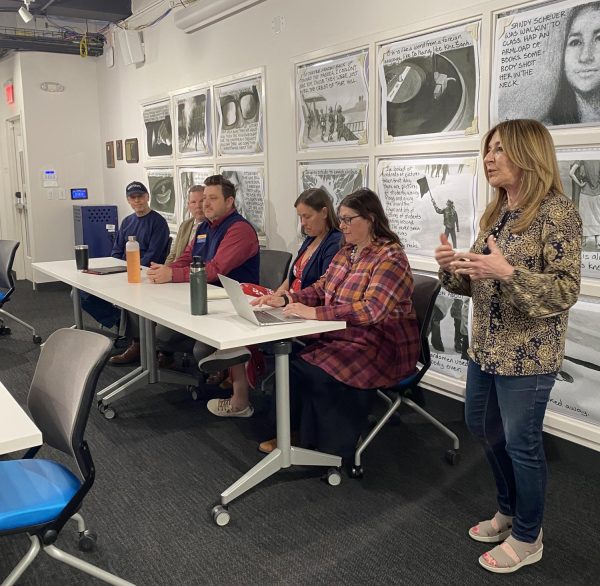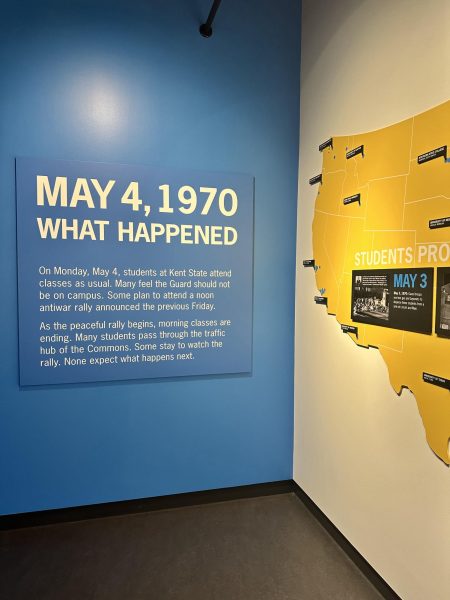Half the books are checking out permanently
September 23, 2010
The average book in an academic research library is only checked out once every 50 years.
That is why Library Dean James Bracken is looking to reduce the library’s in-house collection by 50 percent.
As Bracken walked the shelves of the library Tuesday afternoon, he pointed to two books, Margaret Warner Morley’s “A Song of Life,” printed in 1891. Both copies have never been checked out.
The university plans to reduce the 2.9 million volume collection at a rate of 5 percent per year over the next decade, which gives students more study space in the upper floors, among other places.
“We want to create an environment that students want to come in, as opposed to need to come in,” Bracken said. “There’s not space for that right now.”
The Special Collections won’t be removed, but Bracken is currently looking for display cases to exhibit the collection on the first floor.
The books will be sent to OhioLINK, the state’s book consortium that shares 48 million books with 88 university and college libraries. Students could still request all of the materials housed on site and items would be delivered within a week.
OhioLINK keeps at least two copies of every book in the state. Additional copies of the books are donated to Better World Books, which distributes them to universities in Africa, Bracken said.
A study conducted by OhioLINK found that 6.5 percent of an academic research library’s collection accounts for 93.5 percent of the public’s total use.
Bracken estimates that 25 percent of the collection has never been used, which will be the first wave to go. After that, the Faculty Senate’s Library Committee will weigh in with suggestions on how to proceed.
“We’re going to find books up here that have never ever, ever, ever been used,” Bracken said. “So for the first five years, no one is going to see that, and it’s not going to impact anybody.”
During the library’s second floor renovation during the summer of 2007, a portion of the periodical section was condensed to make room for a study area with tables and armchairs.
“It was almost a pilot of what we’re doing for the larger project,” said Joe Salem, head of the Reference Services Department. “Everything in that area is always used. Period.”
| Meet James Bracken The man President Lefton hired over the summer to optimize the library has experience in reducing collections. Before starting on Aug. 2, Bracken was the assistant director of Ohio State University’s library and oversaw their $109 million renovation. At Ohio State, Bracken was able to reduce 2.5 million volumes to 1.25 million volumes. Before the renovation, Ohio State’s main library saw about 3,000 students per day. After completion, daily attendance jumped to 12,000. “The Ohio State library was a tremendous accomplishment,” Bracken said. “But we didn’t do enough. We left too much of the collection there.” By the numbers 50 years – average book checkout for a library like ours 2.9 million – volumes in the University Library 25 percent – of books in the University Library have never been read 6.5 percent – of books account for 93.5 percent of the public’s total use
|
It’s common for university libraries to reduce their collections, Salem said. A library the size of Kent routinely withdraws 75,000 to 100,000 items a year, Bracken said. Kent State has been downsizing its collection for the past six years, but now plans to speed up the process.
“All libraries weed collections,” Bracken said. “The fact is, as materials become obsolete, you discard them. You withdraw them.”
Unlike their university counterparts, most public libraries constantly reduce their collections to make room for new items. Reed Memorial Library in Ravenna weeds books that haven’t been checked out in three years, although there are some exceptions, said Cass Owens, director of the Reed Memorial Library.
“I’m a book lover,” Bracken said. “My training is a rare book librarian. I want to have more books.
“But when books crowd people out of the building and they’re not used, you have to ask yourself the question, ‘Are there better ways to bring people back into the library to use the books we have?’”
President Lester Lefton has given Bracken the task of raising $10 million for a larger renovation project that would take place over the next 10 to 20 years to reorganize the library and replace aging infrastructure.
The university architects are finishing a space-utilization study that would help them come up with a long-range plan for future renovations. At first, they will plan the ideal library. Most likely, they will pick the most important projects to fund.
“If we were to do everything that we wanted to right now, it likely would approach $100 million,” University Architect Michael Bruder said. “That’s a very, very tough thing to get funded.”
Because they’re still in the early stages of planning, there is no way to estimate the final cost. Either way, funding for most of the library renovations will not come from the $250 million renovations budget the university currently has.
Before plans are made, Bracken hopes to have lunch with students to get their opinion on the renovations. Upcoming dates for “Pizza with the Dean” include Oct. 22 and Nov. 3. Students can sign up on the library’s website.
Contact Frank Yonkof at [email protected].
























